Solomon is faculty in the Stanford University's design school and a creator of civic futures programs like Vote by Design, Building America’s Teammates and The Team.
The first presidential debate of the 2024 campaign takes place Thursday. It is the earliest presidential debate ever held by far, and — given the levels of partisanship — it may also be the ugliest and most negative debate in history, setting the stage for a longer cycle of vitriol and mudslinging.
For the last four years, I’ve been on a mission to amplify the power of our voices and votes in innovative and experiential ways. I’ve created civic-centric programs and fellowships for student athletes, convenings for democracy makers and movers and robust toolkits to show the next generation that democracy isn’t something that happens to them, it’s something they can shape through informed engagement and, of course, their votes.
As we head into this defining moment of the 2024 campaign, I’ve been thinking a lot about how to move beyond viewing this debate as political theater or a rhetorical boxing match, and instead seeing it as an opportunity for deeper reflection on leadership.
This unlikely journey of becoming a “civic futurist” started in 2019, ahead of the 2020 election, when I partnered with several other scenario-planning experts and design strategists to create a new approach to voter education and engagement. As futurists, we were concerned about the escalation of toxic patterns and influences from the 2016 election, and we wanted to create a new nonpartisan, experiential methodology designed with voters at the center — not campaigns, parties, lobbying groups or political pundits. Called Vote by Design, it was developed and piloted as a pop-up class at the Stanford d.school.
At the core of the Vote by Design experience was a simple reframe. Instead of asking, "Who are you voting for?" we instead asked, "What leadership qualities do you believe are crucial in a president?" It's a subtle shift, but one that had profound implications.
We made all of our materials fun, accessible and engaging. We won global awards for our work and touched thousands of next gen voters through partnerships with schools, civic organizations, and digital education platforms. We were particularly thrilled when award-winning historian and celebrated presidential biographer Doris Kearns Goodwin gave us permission to share clips from her Masterclass on presidential leadership as part of the lesson plans.
So, ahead of this year’s historic debate on Thursday, we wanted to resurface our methodology and core visual assets that put principles of critical thinking, active listening and deliberative reflection into practice.
How might you get started with this approach? Let's break it down:
1. Start with leadership qualities (not the candidate).
Before the debate even starts, take a moment to jot down the qualities you think are essential in a president. This could be anything from integrity and empathy to decisiveness and diplomatic skill. There's no right or wrong answer here — it's about what you value. It may be helpful to look at the Vote by Design Leadership Criteria Worksheet we created to help surface potential qualities and facilitate exploration on which ones feel most important. As you watch the debate, try to look beyond the policy positions (though those are important too) and focus on how the candidates embody leadership. How do they handle tough questions? How do they articulate their vision for the country? Do they embody the leadership qualities that you identified?
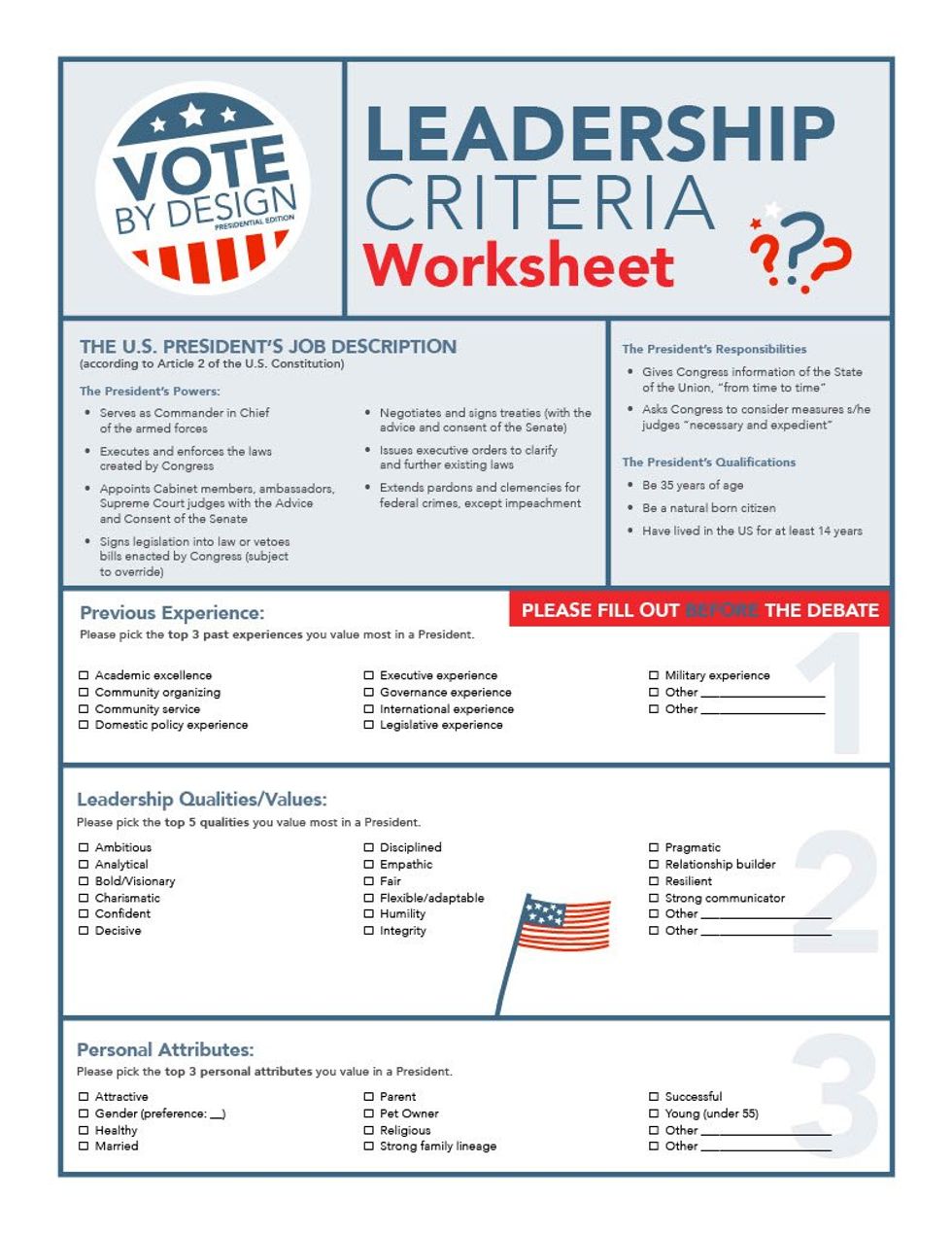
2. Envision potential future scenarios requiring presidential leadership.
One element that was particularly powerful in our Vote by Design program was asking voters to imagine possible scenarios that would require presidential leadership. How might each candidate handle a natural disaster or an international crisis? In 2019, we actually created one around a global pandemic, and another around an insurrection (state capital in our scenario, not national). While we didn’t intend to predict the future, we hoped to prompt new consideration for how their leadership qualities might manifest in high-pressure situations. What scenarios could you imagine unfolding in the next four years or more? What type of leadership is required now?
3. Listen and evaluate evidence beyond the hype.
Look past the rehearsed talking points and intended social media “zingers.” We all know politicians come prepared with sound bites, but what did their language and rhetoric convey about the person behind the hyperboles? What core values and enduring qualities did each candidate display? How did those align with the priorities you identified that matter most to you? This may require some independent thought, especially if there are loud, opinionated voices dominating your news feeds and close community.
4. Reflect on what you learned.
After the debate, take some time to reflect. Did the candidates display the qualities you identified as important? How might you imagine future speeches at international gatherings with other global leaders or at a future State of the Union address? Did your perceptions change over the course of the debate? This kind of reflection, even just for a few quiet minutes, can be incredibly revealing.
Debates aren’t about “winning or losing,” or creating the most viral TikTok moment. Rather, debates offer us a chance to gather more data to evaluate the best candidate for the job. As one student said after a Vote by Design workshop, “Identifying my values ahead of time helped me see the differences in how each candidate presented themselves as the future leader of our country.”
This approach encourages us to think more holistically about presidential leadership. It's not just about who has the best “gotchas” or who produced good fodder for social media influencers. Rather, debates offer us another opportunity to observe and examine who has the qualities to lead effectively in a complex, unpredictable world.
This method also empowers us as voters. Instead of feeling like we're simply reacting to campaign messaging or media narratives, we're actively engaging in a thoughtful evaluation process. We're not just choosing a candidate; we're defining what good leadership means to us.
As we head into another election season, I can't help but wonder: How might our political discourse change if more of us adopted this approach? Could it lead to more nuanced, substantive conversations about leadership? Might it help bridge some of the divides that seem so insurmountable in our current political climate?
I don't have all the answers, but based on the kind of learning and growth I’ve seen firsthand from taking a more voter-centric approach, I'm still hopeful about the possibilities. So as you prepare for Thursday’s debate, I encourage you to give this method a try. You might be surprised by what you discover – about the candidates, about the presidency, and even about yourself.





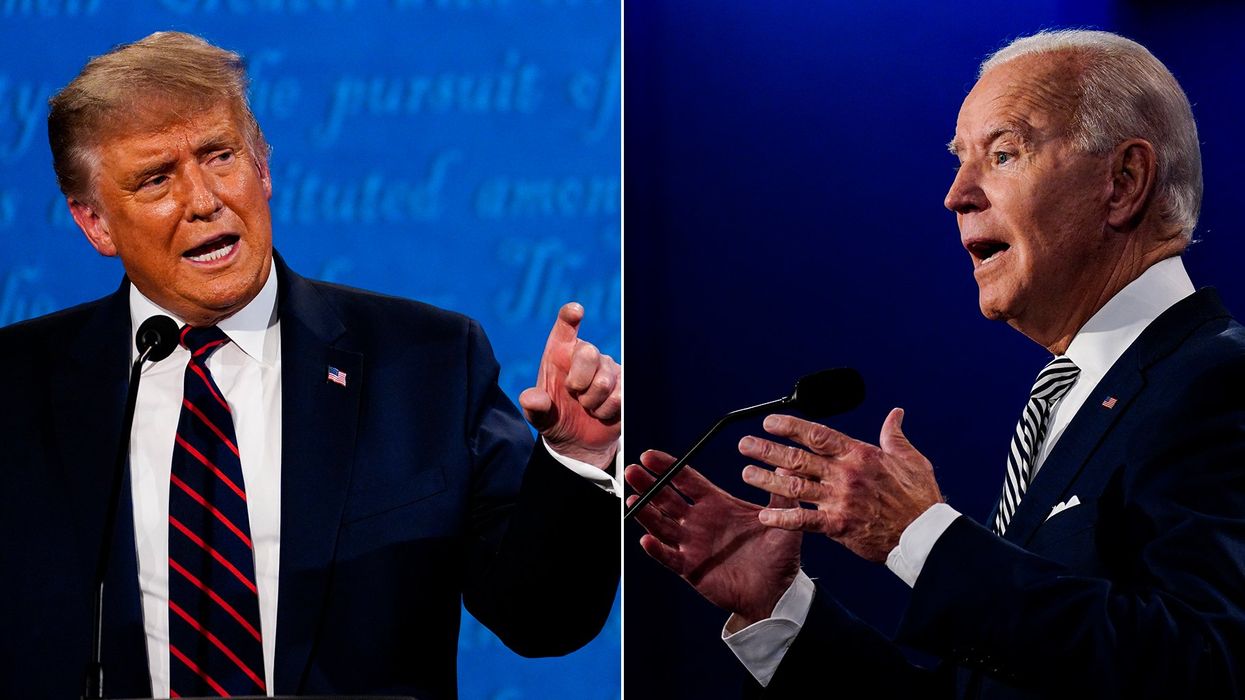

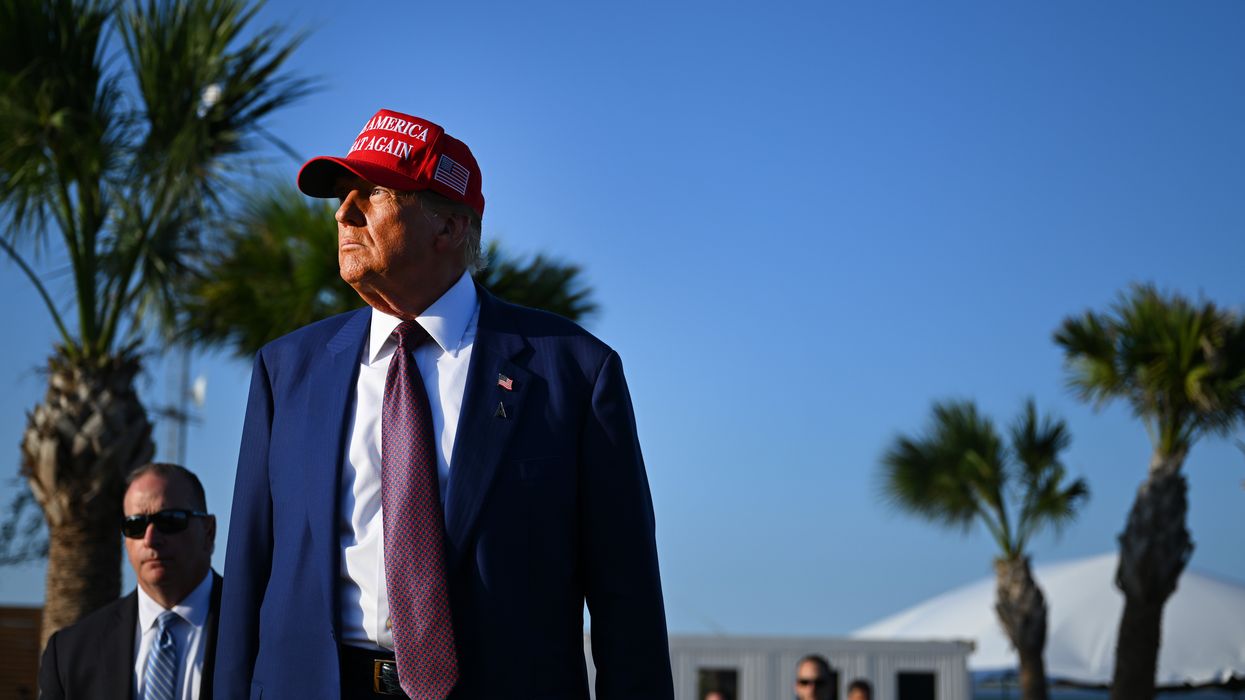
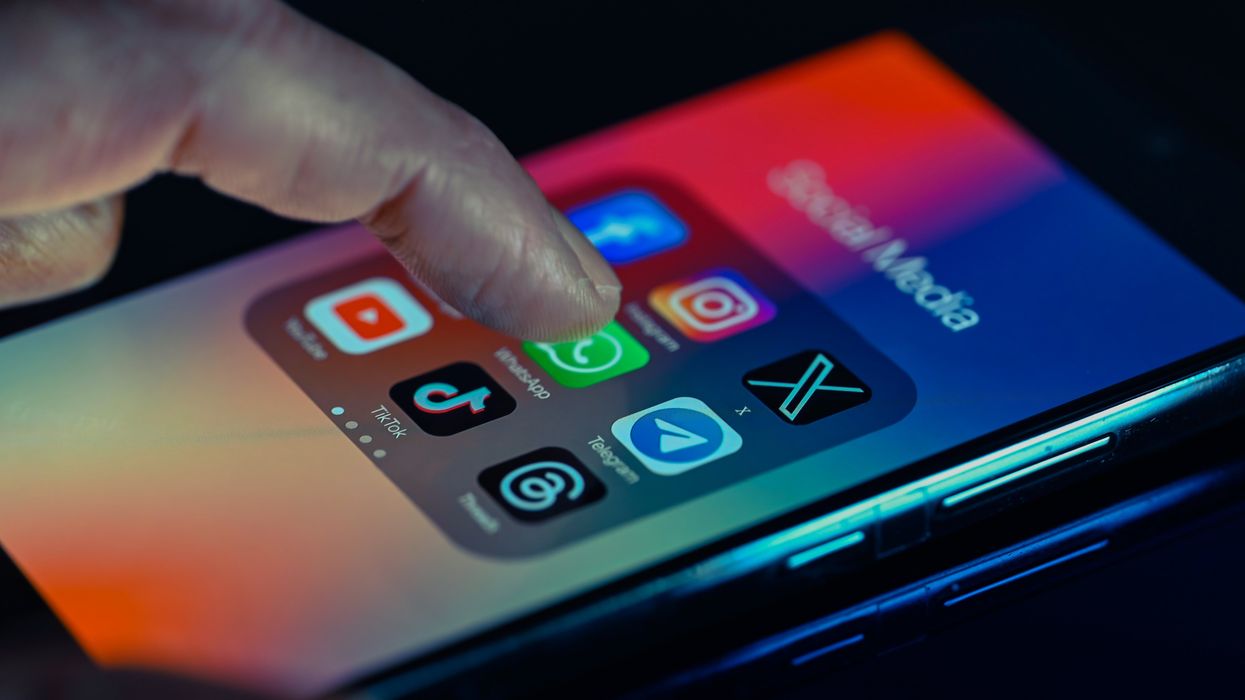
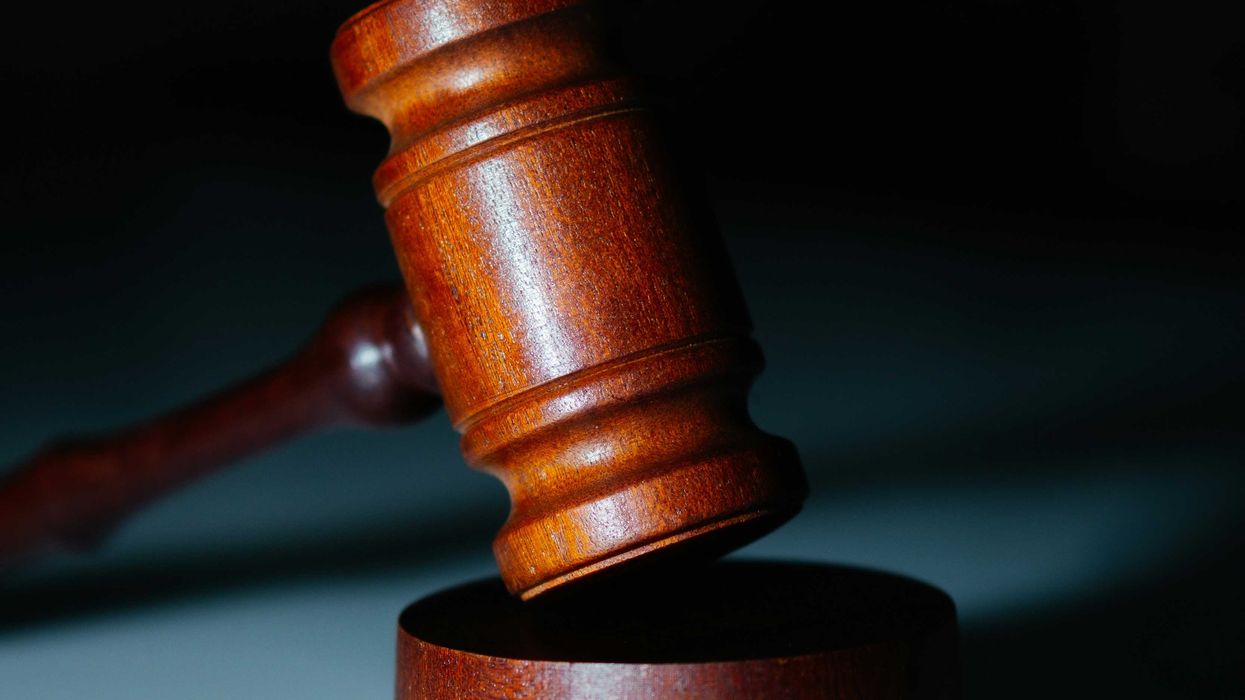
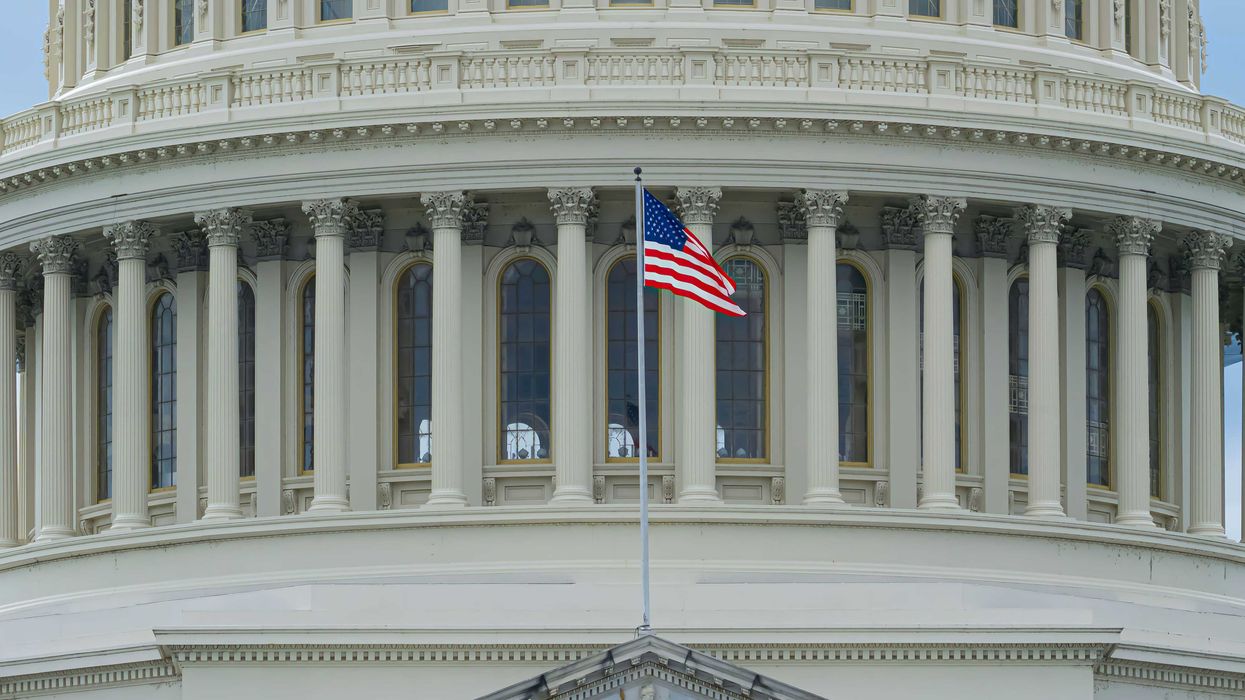
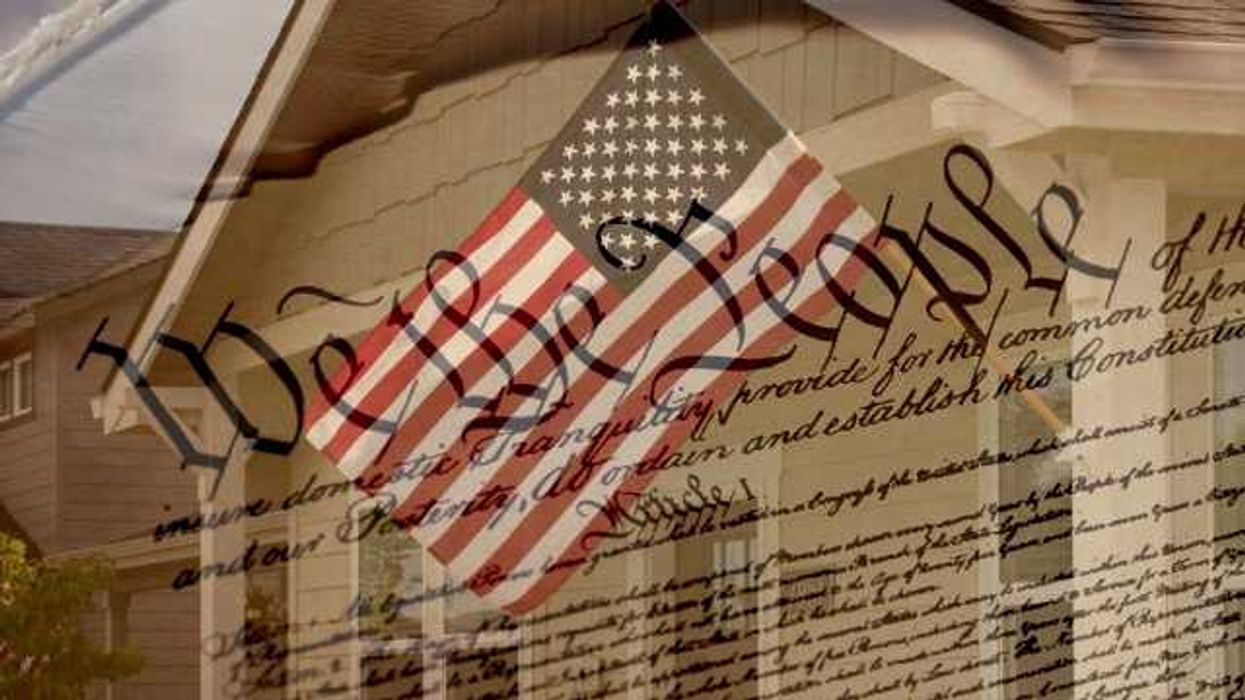
 Shannon Gormley, Rhode Island Public Schools
Shannon Gormley, Rhode Island Public Schools Les Sinclair, Blue Ridge Area Food Bank
Les Sinclair, Blue Ridge Area Food Bank Elena Casillas Hoffman,
Elena Casillas Hoffman, 
 Darrious Hilmon, Executive Director, CAN-TV
Darrious Hilmon, Executive Director, CAN-TV







